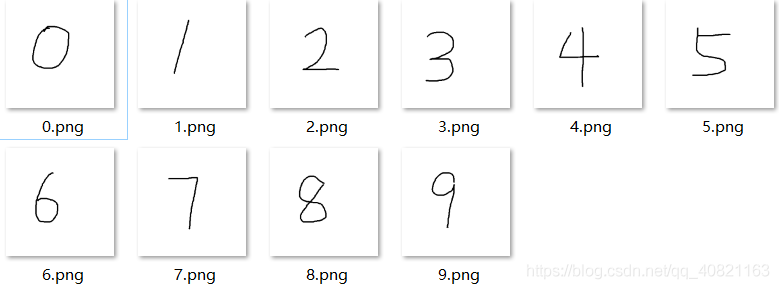LeNet is trained with MNIST’s training set, and the code is not shown here.
directly loads the saved model
lenet = torch.load('resourses/trained_model/LeNet_trained.pkl')
Attached to the test code
print("Testing")
# Define conversion operations
# Read in the test image and transfer it to the model.
test_images = Image.open('resourses/LeNet_test/0.png')
img_to_tensor = transforms.Compose([
transforms.Resize(32),
transforms.Grayscale(num_output_channels=1),
transforms.ToTensor(),
transforms.Normalize([0.5], [0.5])])
input_images = img_to_tensor(test_images).unsqueeze(0)
# Move models and data to cuda for computation if cuda is available
USE_CUDA = torch.cuda.is_available()
if USE_CUDA:
input_images = input_images.cuda()
lenet = lenet.cuda()
output_data = lenet(input_images)
# Print test information
test_labels = torch.max(output_data, 1)[1].data.cpu().numpy().squeeze(0)
print(output_data)
print(test_labels)
At present, there is no correct rate according to my own picture, and I can’t find any reason. At present, the frequency of output 8 is very high.
later looked up relevant information, for the following reasons: </mark b>
-
- parsed MNIST data set, you will find that the pictures in the data set are white words on a black background, such as:

-
- , but our custom test pictures are generally black words on a white background, such as:

-
- , so I took the custom test pictures by pixel and then re-tested
- pixel reverse code is as follows:
from PIL import Image, ImageOps
image = Image.open('resourses/LeNet_test/0.png')
image_invert = ImageOps.invert(image)
image_invert.show()
After pixel reversal, the accuracy rate of the test reaches 50-60 percent, but the accuracy rate is still not ideal. Please refer to the following reasons
- MNIST data set contains the handwriting of foreigners. The handwriting style and habits of foreigners are slightly different from those of Chinese people, which is also a major factor affecting the accuracy of the test. But the owner of the building has not tested the correct rate of the image test after modifying the font.
Read More:
- Python ProgressBar adds its own dynamic information to the progress bar
- [Solved] Python Keras Error: AttributeError: ‘Sequential‘ object has no attribute ‘predict_classes‘
- Python synthesizes multiple pictures into one video
- Python: RNN principle realized by numpy
- `Model.XXX` is not supported when the `Model` instance was constructed with eager mode enabled
- [Solved] LeNet Script Train Error: AttributeError: ‘DictIterator’ object has no attribute ‘get_next’
- [ONNXRuntimeError] : 10 : INVALID_Graph loading model error
- To solve the problem that the loss of verification set of resnet50 pre-training model remains unchanged
- Invalid python sd, Fatal Python error: init_fs_encoding: failed to get the Python cod [How to Solve]
- How to Solve keras load_model() Error
- Pytorch Loading model error: RuntimeError: Error(s) in loading state_dict for Model: Missing key(s) in state_dict
- [Solved] ValueError: only one element tensors can be converted to Python scalars
- [Solved] PyTorch Load Model Error: Missing key(s) RuntimeError: Error(s) in loading state_dict for
- Jupyter notebook Failed to Switch to the Virual Environment: DLL load failed python.exe could not find the entry
- You can run the Ansible Playbook in Python by hand
- [Solved] torchvision Error: UserWarning: Failed to load image Python extension: Could not find module
- When sending HTTP request, python encountered: error 54, ‘connection reset by peer’ solution
- [Solved] Python Selenium Error: AttributeError: ‘WebDriver‘ object has no attribute ‘find_element_by_xpath‘
- Python+Selenium Error: AttributeError: ‘WebDriver‘ NameError: name ‘By‘ is not defined
- [Solved] Python Error: An attempt has been made to start a new process before the current process has finished …